Ancient Athens Part IV
Athens is an amazing place, where something ancient seems to be hiding around every corner. If you are based in the middle of the city, you have a bunch of historic sites all within walking distance. After having visited the Acropolis and the Panathenaic Stadium, I headed off on the hoof to discover more of ancient Athens.
A short walk east of the Acropolis brings you to Hadrian’s Arch; the Hadrian in question being Roman Emperor from 117-138AD.
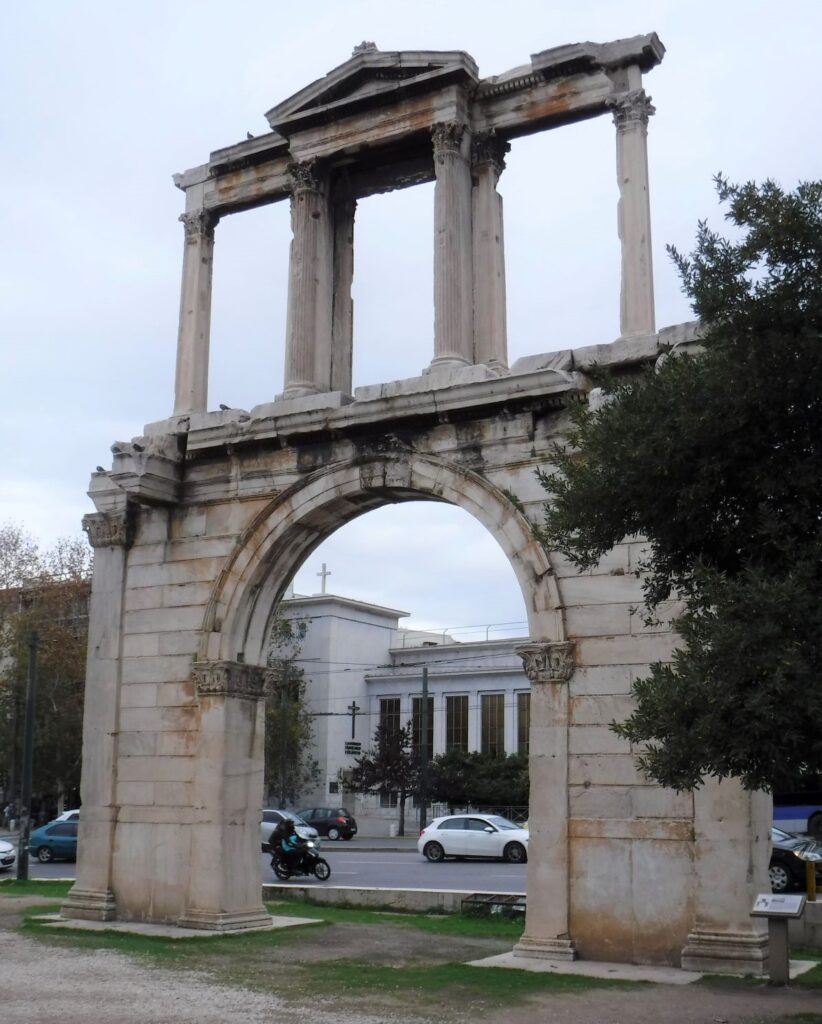
Historian’s reckon that the Arch is built on an ancient roadway that linked the old city of Athens from the new city, which was built by Hadrian. Two inscriptions appear on Hadrian’s Arch: on the side facing the Acropolis it states ‘This is Athens, the ancient city of Theseus’; and on the other ‘This is the City of Hadrian and not that of Theseus’.
This is the ‘This is Athens, the ancient city of Theseus’ side
I am unsure why it was important to point out that the City of Hadrian was not that of Theseus, as this would appear to be self-explanatory. I mean, for consistency, they really ought to have inscribed the Acropolis-facing side ‘This is Athens, the ancient city of Theseus and not that of Hadrian’, even though this is also self-explanatory. Anyway, I assume it would be problematic to track down the inscriber and ask him why it says what it says, as I expect he has retired by now. And before anyone gets shitty, it was almost certainly a ‘him’.
Right next to Hadrian’s Arch is the impressive Temple of Zeus. This massive structure was built in stages over more than 120 years, being eventually completed by that compulsive developer Hadrian.
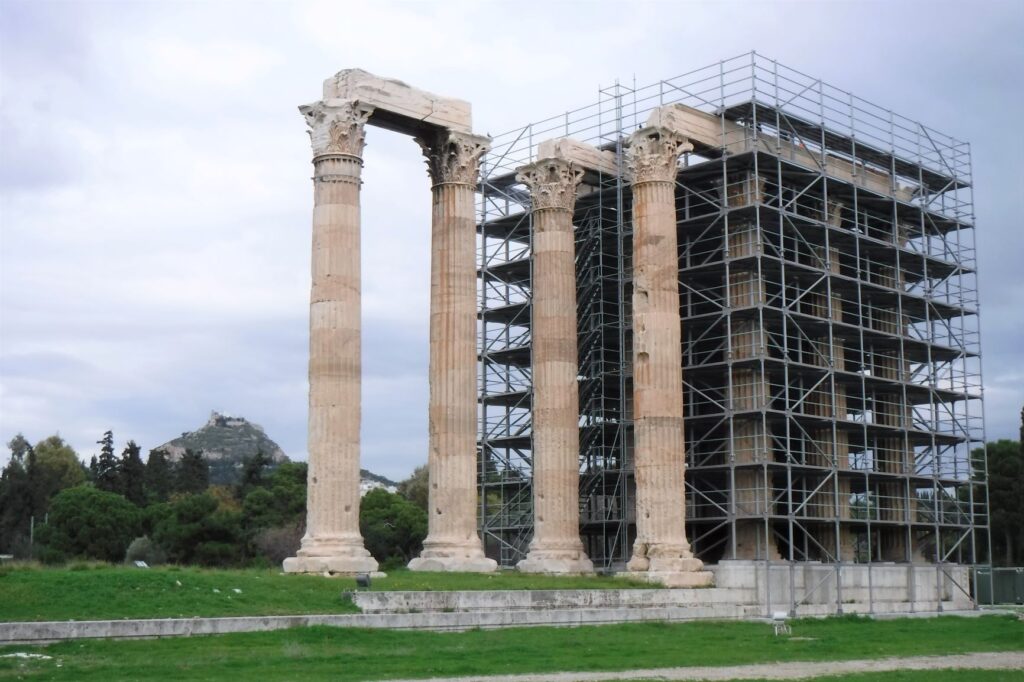
Heading north-east from the Temple of Zeus, you will find the Lyceum of Aristotle. Now this site certainly isn’t one of the most visually impressive bits of ancient Athens, but it’s still an interesting spot.
Archaeologists believe that the first gymnasia appeared in Athens in the 6th century BC. Young blokes would get together at the gym for some good honest fun, which took the form of nuding up, smearing themselves with oil, and exercising. Boxing and wrestling were popular pursuits, along with pankration, which apparently was a combination of the two, and thus arguably the beginning of MMA.
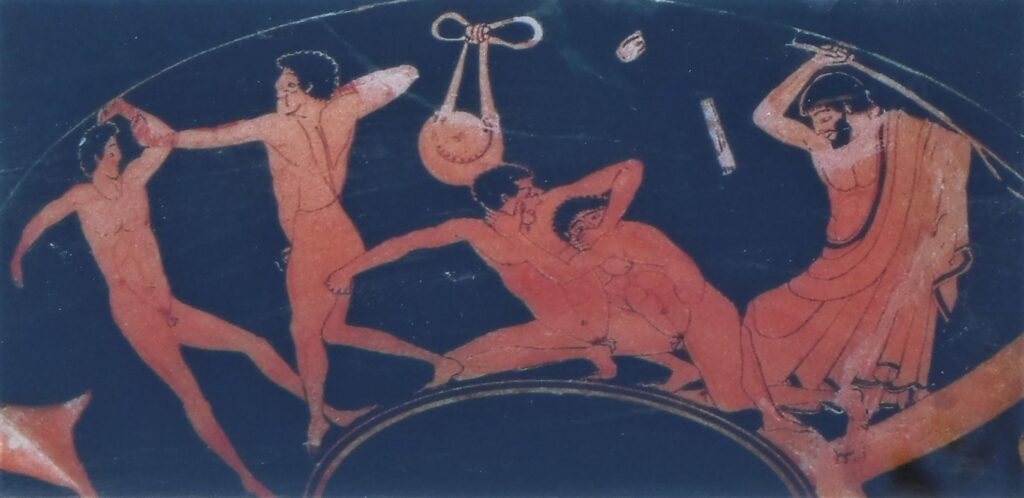
Over time, buildings began to house the gyms, and these developed into cultural centres and places of learning.
It was in the old gymnasium in the suburb of Lykeion that Aristotle set up his school. When he wasn’t figuring out the cosmos, demystifying physics, or pondering questions of morality, Aristotle would wander around the grounds of the site with his students and tell them interesting things. Information panels at the Lyceum state ‘Aristotle was the epitome of human wisdom and the undisputed authority on virtually every discipline’. Now that’d be an interesting bloke to have around for tea.
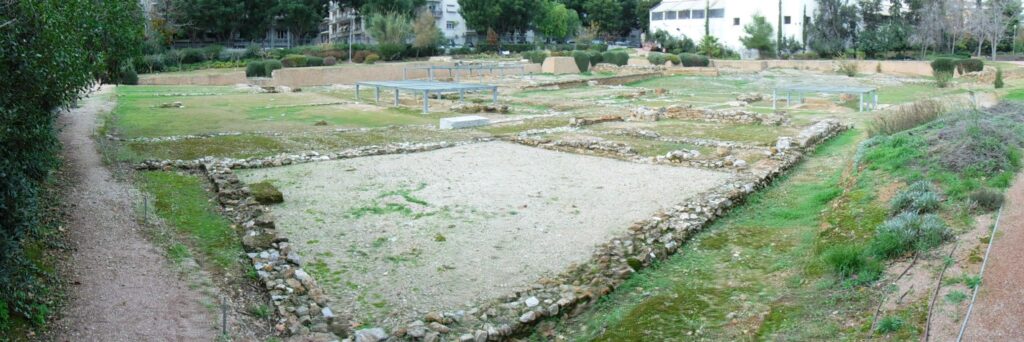
A short distance north of the Acropolis stands the remains of the Hadrian’s Library complex. Not satisfied with just building massive temples, Hadrian also stumped up the bucks for places of learning. Located on the southern edge of the bustling Monastiraki Square, Hadrian’s Library is a great example of vibrant modern Athens existing directly beside its ancient past.
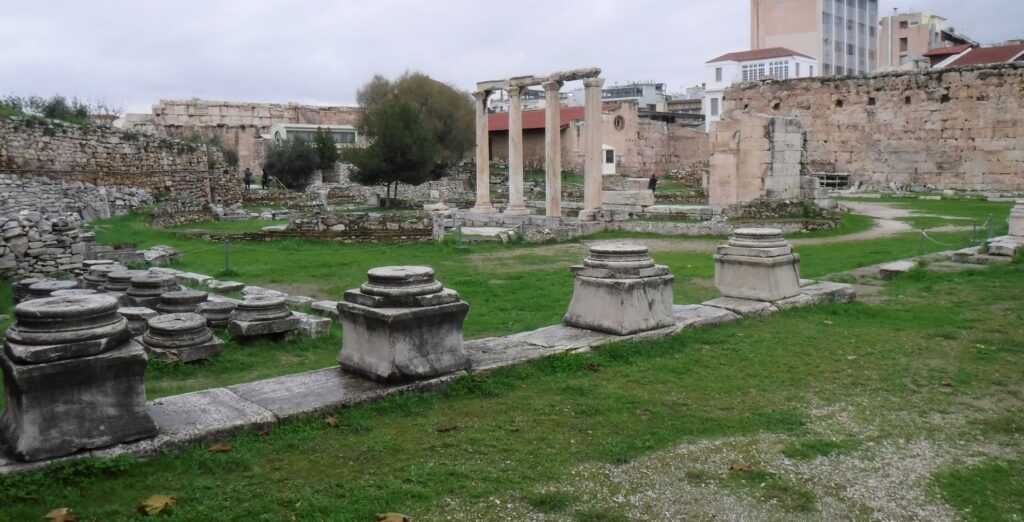
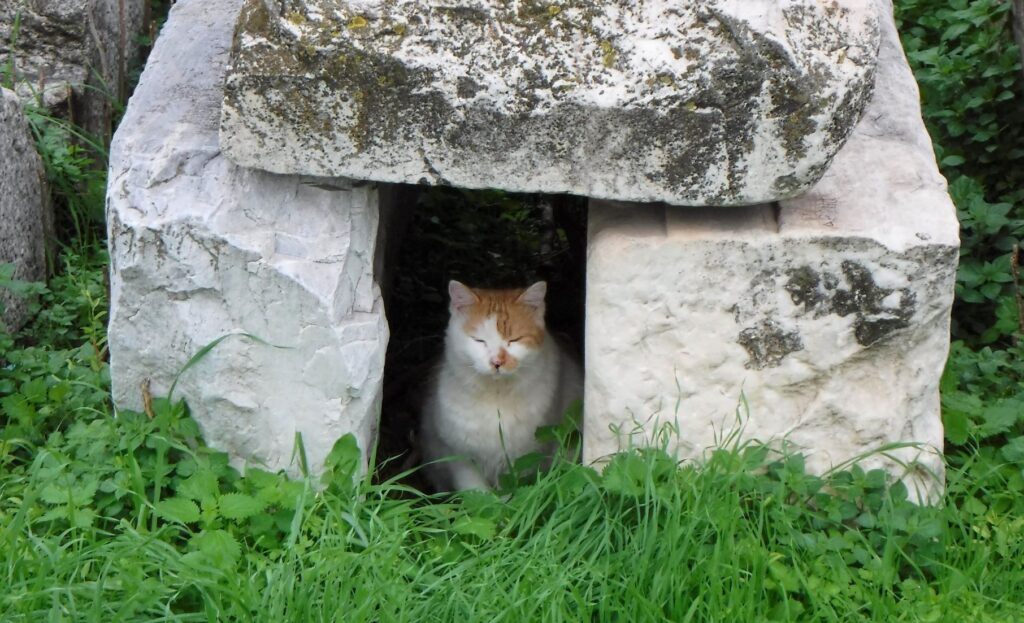
Wherever there is a space in Athens, you’ll find a cat in it. This one lives in Hadrian’s Library, along with about 1000 of his mates
Only 100 metres west of Hadrian’s Library is the extensive Ancient Agora of Athens. The Greek Ministry of Culture and Sports explains ‘The Agora was the heart of ancient Athens, the focus of political, commercial, administrative and social activity, the religious and cultural centre, and the seat of justice’.
Located on a rise within the Agora complex is the impressive Temple of Hephaistos, which despite being built more than 400 years BC, is in surprisingly good nick*. Heph was the God of Fire, Metalworking and various other crafty pursuits, and sculptures featured on his Temple have suitably laborious themes, including the Labors of Herakles and the Labors of Theseus.
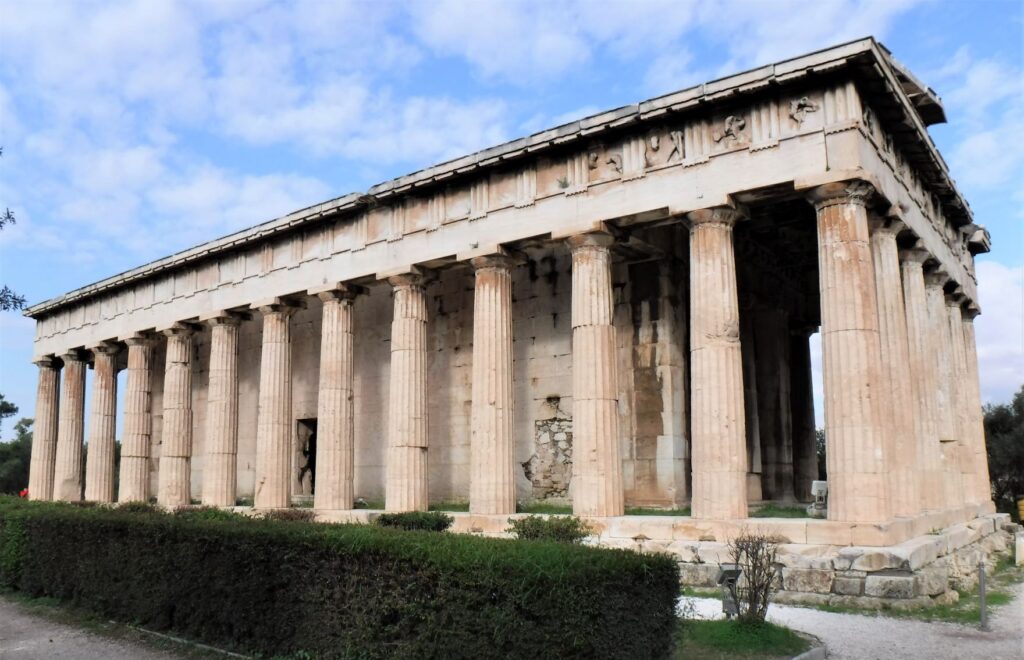
In amongst the ruins of the Agora I came across this tortoise. Now with tortoises it’s a bit hard to tell their age, so this one may have seen Athens go through a lot of changes over its lifetime. Or maybe not. Regardless, it was keeping tight-lipped.
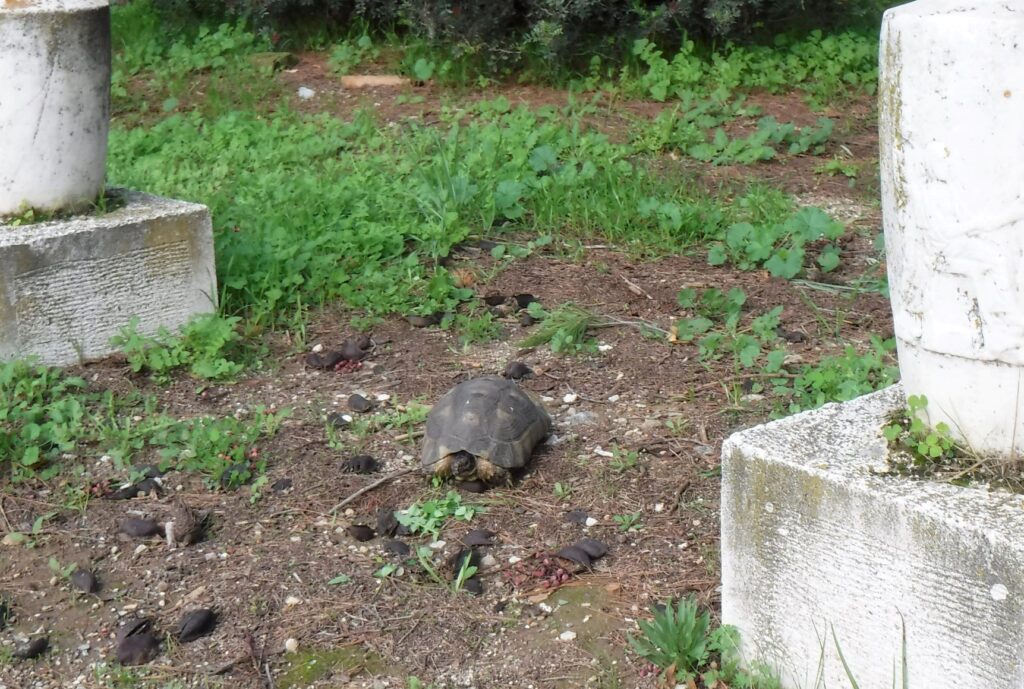

Couldn’t get a word out of it. Or a movement either, for that matter
The other striking building in the Agora of Athens is the Stoa of Attalos. It is remarkable for its 120 metre length, two stories, zillions of columns and the fact that it wasn’t built by Hadrian. In ancient times, according to the Ministry of Culture and Sports, the Stoa was ‘…a place for Athenians to meet, walk and to do business’.
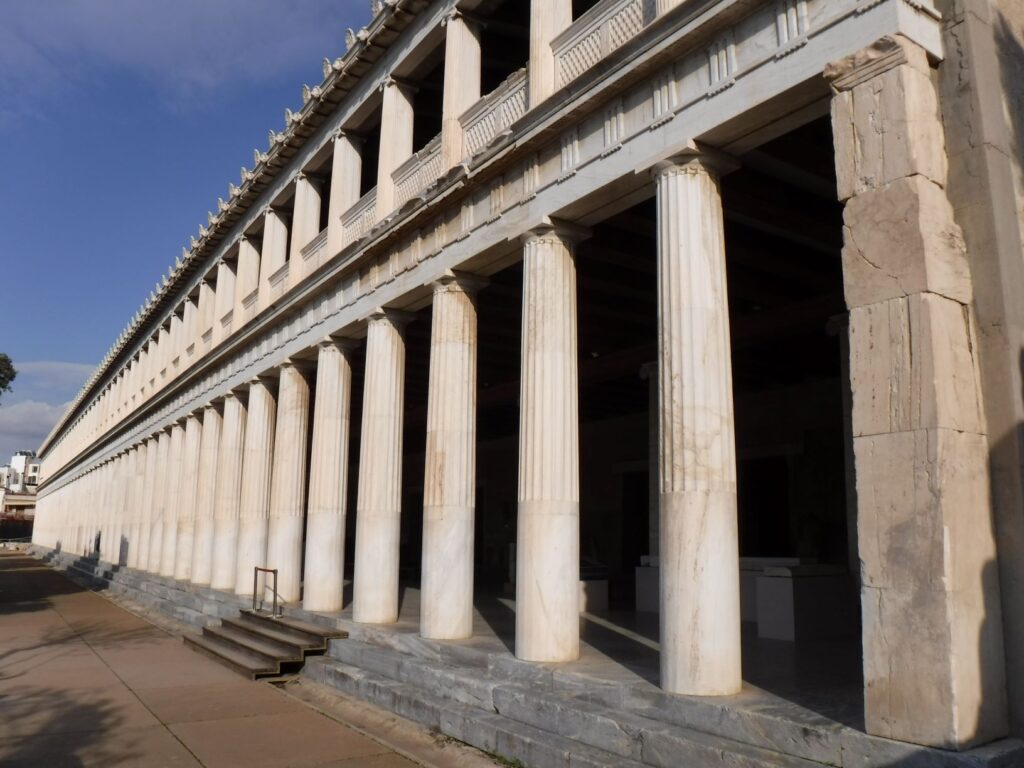
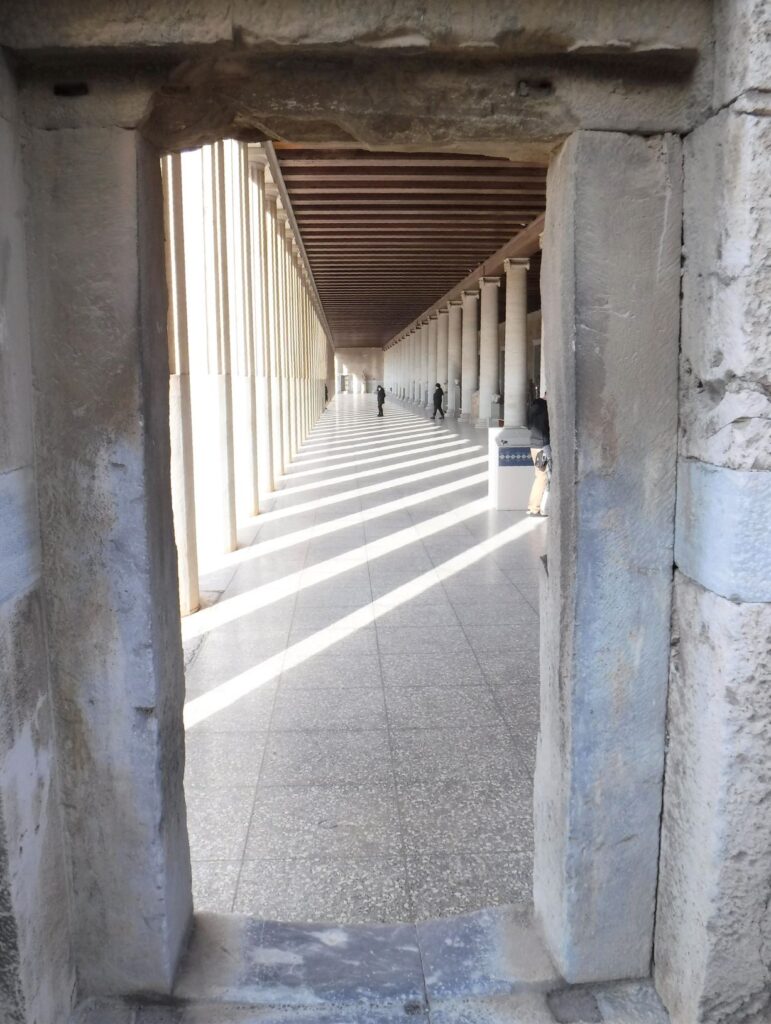
Now for the sake of accuracy I have to tell you that the Stoa has actually been rebuilt, and here’s why. Back in 267AD, the invading Heruli overwhelmed Athens’ defenders and set about sacking the city. Sadly the Stoa fell victim to the vandalism, and to add insult to injury, its ruins were later plundered for building material to construct a defensive city wall. It wasn’t until the 1950s that the Stoa was rebuilt.
Stoic
Inside the Stoa today you won’t find many Athenians meeting, walking and doing business, but you will find visitors checking out the museum exhibits on display.
The archaeological record shows that, contrary to Australian lore, the barbeque was not invented in the land Down Under. In fact, Barbeque was the Greek God of Grilling and Saturday Afternoon Beers, and the Stoa Museum had a couple of nice examples of prototype ceramic BBQ grills.

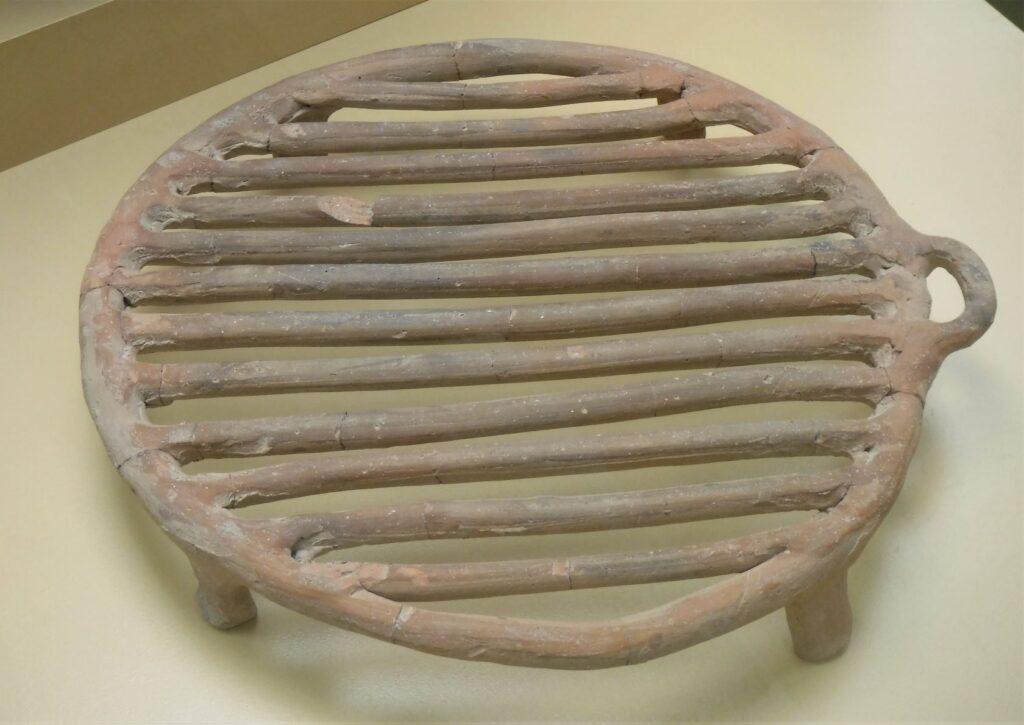
Square for the snags, round for the rissoles
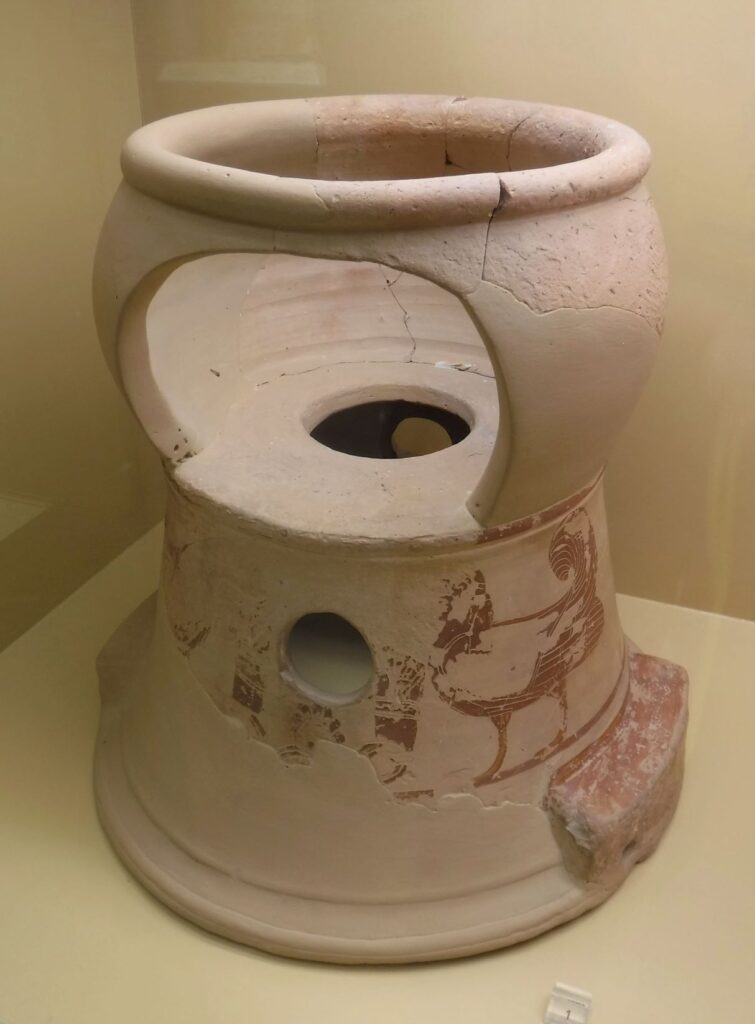
Ceramics were well advanced in both form and function in ancient Greece. A fine example is this kids’ potty, skilfully crafted in the 6th century BC.
Just pop your little one into this comfy clay loo and leave them to it
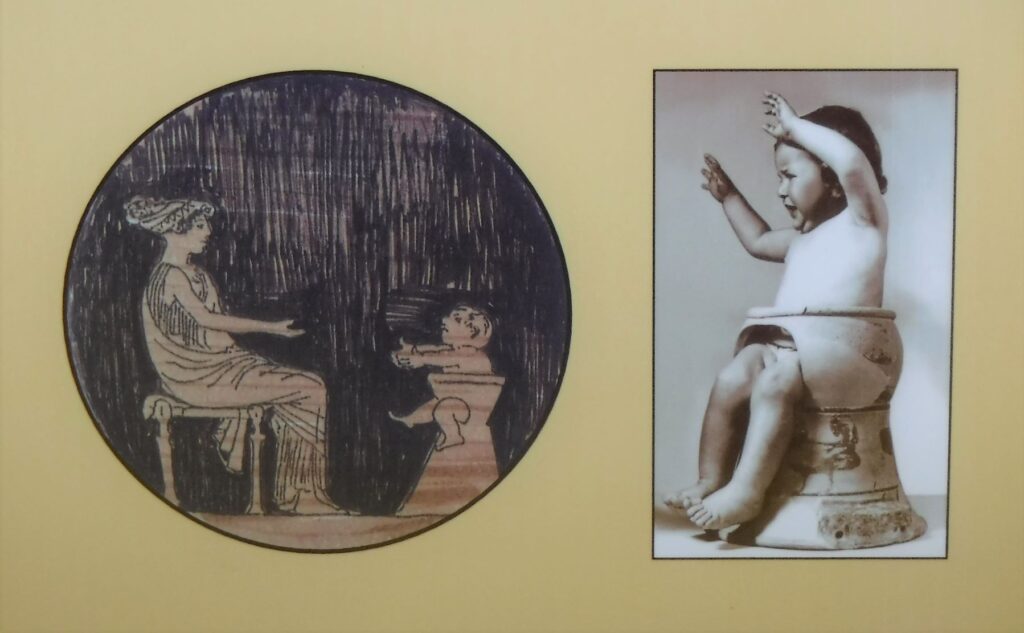
Kids being left in clay commodes outside the Athens Casino sparked community outrage
The ancient Greeks had a system of standard weights to ensure fair and consistent trade transactions. To make sure that each weight was easily recognisable whether one was literate or not, unique designs were assigned to each unit of weight.

For example, a bronze tortoise equalled 127.5 grams, a lead dolphin 455g, and a lead amphora 301g. Neat, hey?
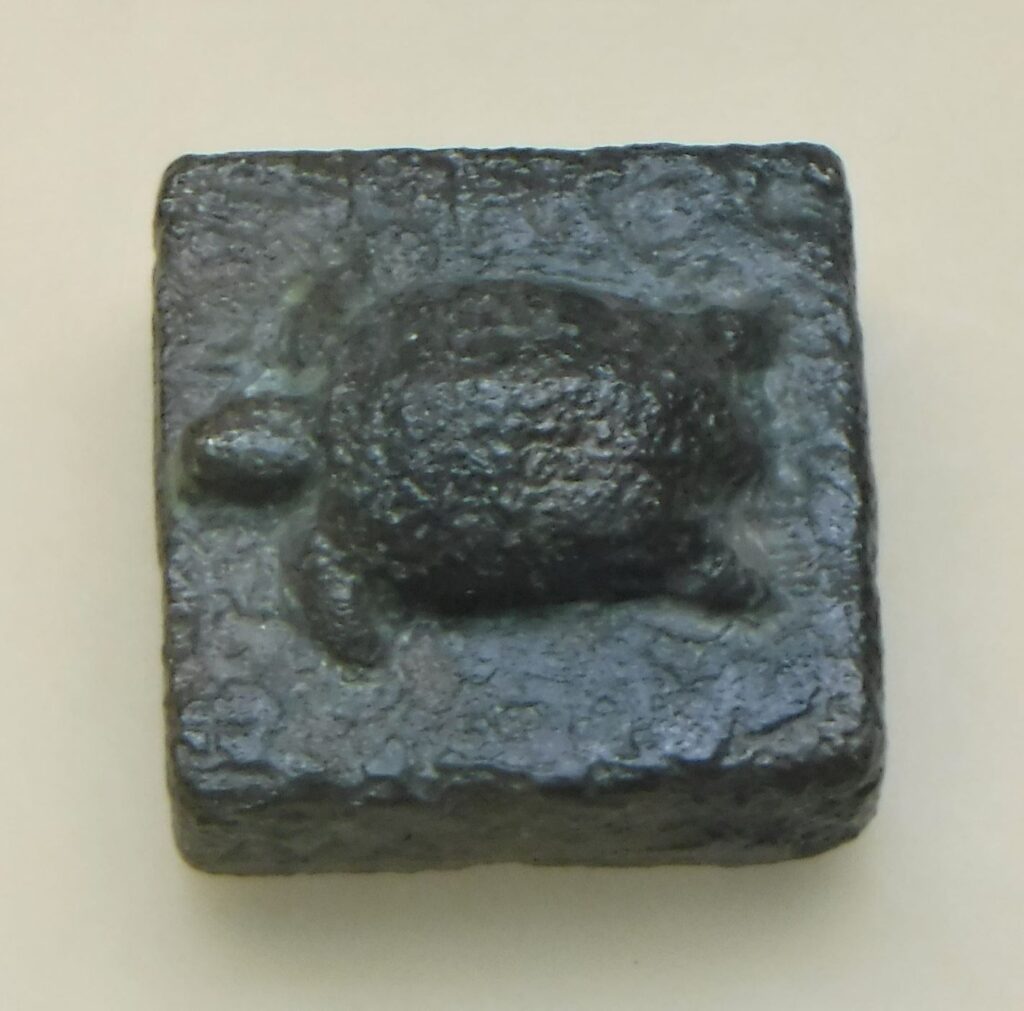
‘Give us a knuckle bone of rice, a dolphin of flour….oh and a tortoise of those dried figs will ya mate?’
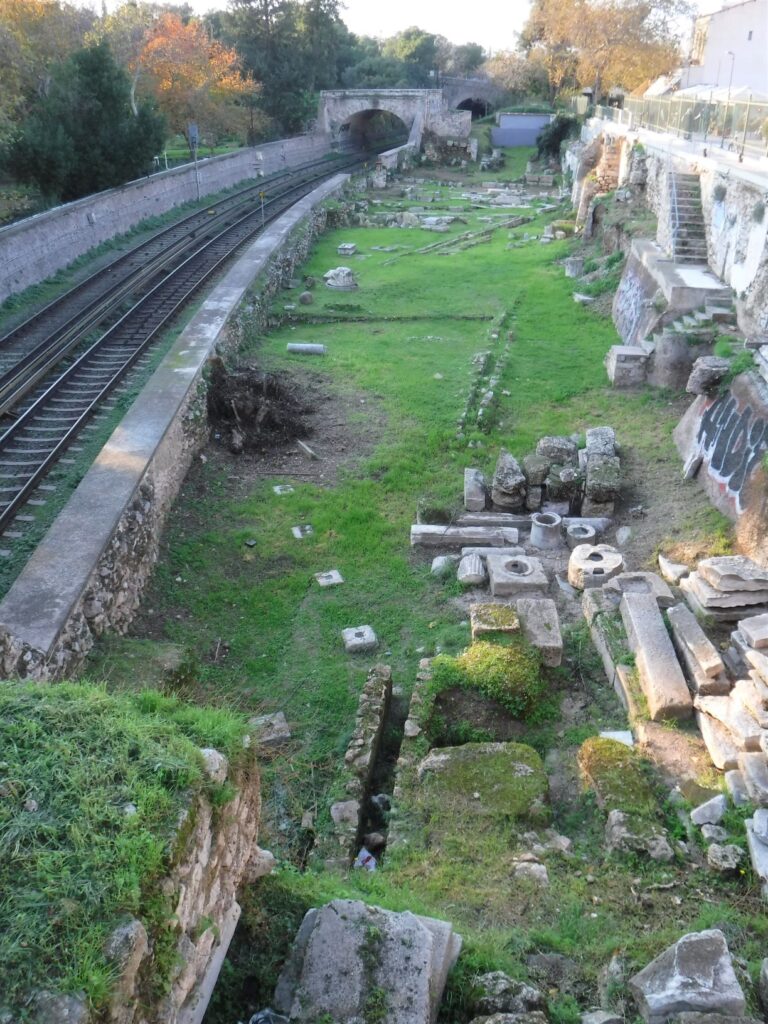
When leaving the Agora of Athens, you cross a bridge over the railway line, which cleaves off the northern edge of the complex. A train was passing beneath when I was heading back to town; a piece of modern technology passing through Athens’ ancient heart.
In Australia, the sides of railway lines are littered with rubbish, shopping trolleys and share-bikes. In Athens, it’s ancient artefacts
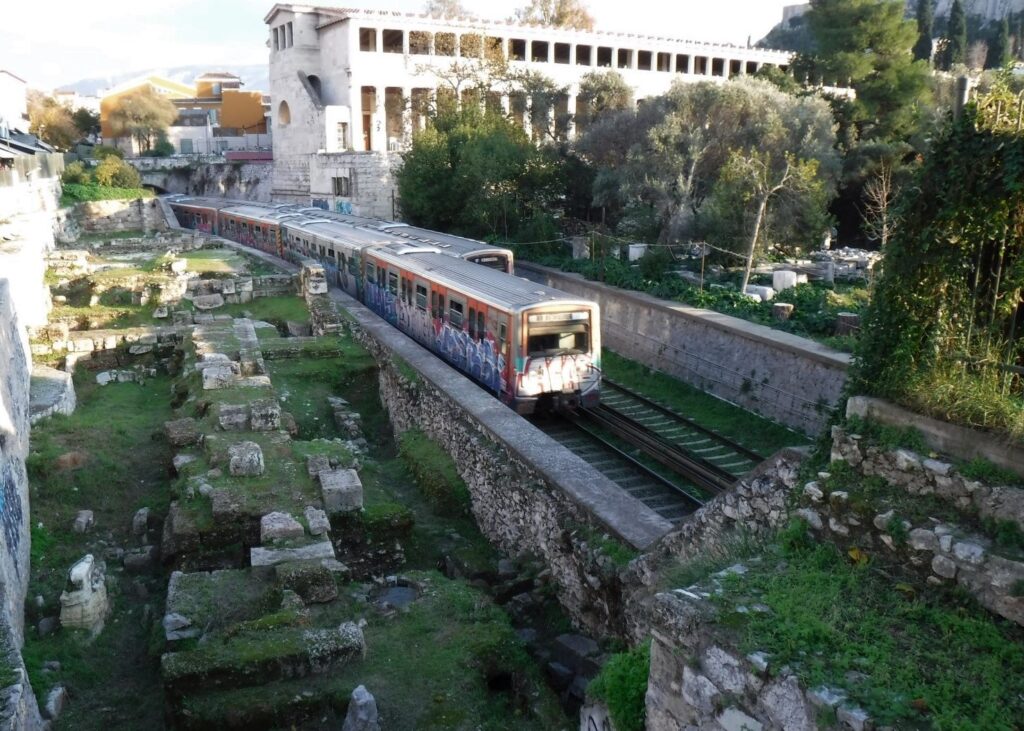
With a little walking, a bunch of Athens’ ancient sites are all within reach. So get out on the hoof when you visit this fascinating city.
*Australian slang meaning ‘condition’
For the official Greek Ministry of Culture and Sports websites head to Hadrian’s Arch, Lyceum of Arisotle, Hadrian’s Library, Ancient Agora of Athens
If you enjoyed this post, you may also like Acropolis Museum, The Acropolis
Leave a Reply